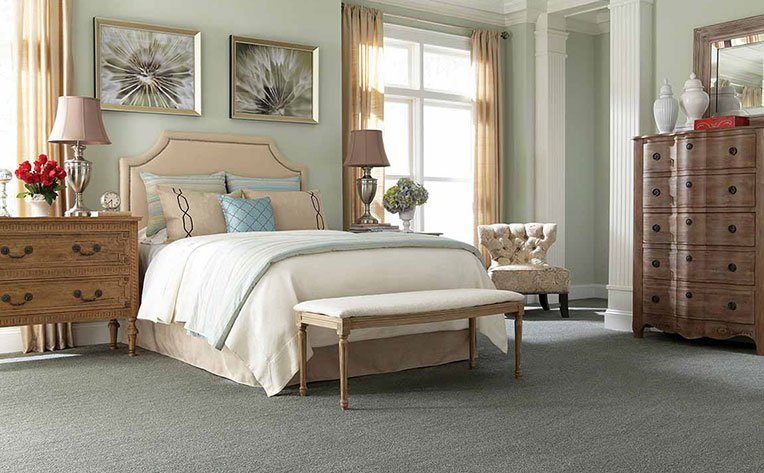How to Match Your Bed with Bedroom Furniture
Creating a well-designed bedroom isn’t just about buying attractive pieces of furniture—it’s about ensuring those pieces work together in harmony. The bed is the focal point of any bedroom, but matching it correctly with your furniture is what ties the whole room together.
If you’re furnishing a new space or giving your bedroom a makeover, this guide will walk you through practical steps to coordinate your bed with other pieces for a cohesive and inviting interior.
1. Understand Your Bedroom Style
Before selecting furniture, identify the overall look and feel you’re aiming for. This could be:
- Modern/Minimalist: Clean lines, neutral tones, uncluttered design.
- Rustic/Farmhouse: Natural wood finishes, warm textures.
- Classic/Elegant: Tufted headboards, ornate nightstands, rich color palettes.
- Industrial: Metal frames, darker hues, exposed hardware.
- Bohemian: Eclectic colors, layered textiles, mix of patterns.
Once you’ve nailed down your preferred style, it’s easier to find furniture pieces—like dressers, nightstands, and wardrobes—that complement your bed’s design.
2. Choose a Cohesive Color Palette
Your bedroom’s color scheme sets the tone for the entire space. When matching your bed with other furniture:
- Stick to 2–3 core tones to maintain consistency.
- Warm woods (like walnut or oak) pair well with beige, cream, or terracotta.
- Cooler tones (like ash or grey) work best with whites, blues, and metallics.
If your bed frame is upholstered, take cues from the fabric color and texture to choose complementary shades for other pieces.
Pro tip: Matching doesn’t mean everything needs to be the same color. Contrast can add depth—as long as tones are in the same family or thoughtfully balanced.
See also: The Benefits of In-Home Physical Therapy for Seniors
3. Mix Materials Smartly
It’s totally acceptable—and even desirable—to mix materials, as long as it looks intentional. Some effective combinations include:
- Wooden bed + metal nightstands
- Upholstered bed + mirrored or lacquered dressers
- Metal bed frame + rattan or woven accessories
The key is to keep a balance: if your bed has a bold material (like velvet or iron), let the other furniture pieces be more neutral in texture or tone.
4. Balance Scale and Proportion
Furniture should complement the size and scale of your bed. A few helpful rules:
- A king-size bed looks best with larger nightstands and a tall wardrobe.
- A queen or full bed pairs well with medium-sized dressers and compact seating.
- Avoid overfilling small rooms with oversized furniture; opt for minimalist frames and floating pieces instead.
Maintaining visual balance helps the space feel cohesive and functional.
5. Coordinate Headboard Style with Surrounding Pieces
If your bed has a headboard—especially an upholstered or detailed one—make sure nearby furniture doesn’t clash. For instance:
- A tufted fabric headboard works well with soft-close nightstands or elegant bedside lamps.
- A sleek wooden headboard fits effortlessly in Scandinavian or Japandi-style interiors with low-profile storage pieces.
- An industrial metal headboard pairs well with reclaimed wood or minimalist furniture.
The style of the headboard often defines the “mood” of the room, so use it as your anchor piece.
6. Nightstands: Match, Complement, or Contrast?
Your nightstands don’t have to be identical or from the same set as your bed. In fact, curated contrast can make the space feel more stylish and intentional. You have three options:
- Match: Same color, material, and finish as the bed frame—classic and safe.
- Complement: Similar style or tone, but not identical—adds personality.
- Contrast: A completely different material or design that still fits within the room’s theme—great for eclectic or modern rooms.
Choose based on your style preference and the role nightstands play in your space.
7. Unify with Accessories
Once major pieces are chosen, accessories can help tie everything together:
- Rugs that echo bed upholstery or wood grain
- Throw pillows and blankets that match your furniture’s color scheme
- Lamps, art, or mirrors that reflect the bed’s style (metal, wood, upholstered)
These finishing touches bring cohesion, even when the furniture pieces themselves vary in design.
8. Practical Layout Tips
Don’t forget layout and flow when matching your bed with other furniture:
- Leave enough walking space around the bed (ideally 24–30 inches).
- Keep dressers or wardrobes accessible without blocking doors or windows.
- Position mirrors or artwork to enhance symmetry with your bed frame and headboard.
Functional layout contributes just as much to harmony as style does.
9. Don’t Overmatch
Avoid the temptation of buying furniture “sets” where everything looks the same. While convenient, this can make your space feel generic and flat. Instead, aim for curated coordination—where pieces share a common theme but have unique characteristics.
This approach adds personality and makes your room feel more thoughtfully designed.
Final Thoughts
Matching your bed with bedroom furniture doesn’t require a designer’s eye—just a clear sense of style, proportion, and function. By balancing materials, color schemes, and scale, you can create a unified, comfortable space that reflects your taste and lifestyle.
Remember: the bed may be the centerpiece, but the supporting furniture sets the stage. Start with a strong anchor, and let each piece complement the next.
For more inspiration on bed styles and frames ideal for UAE interiors, visit the Hoc Furniture to find pieces that work in harmony with your space.


